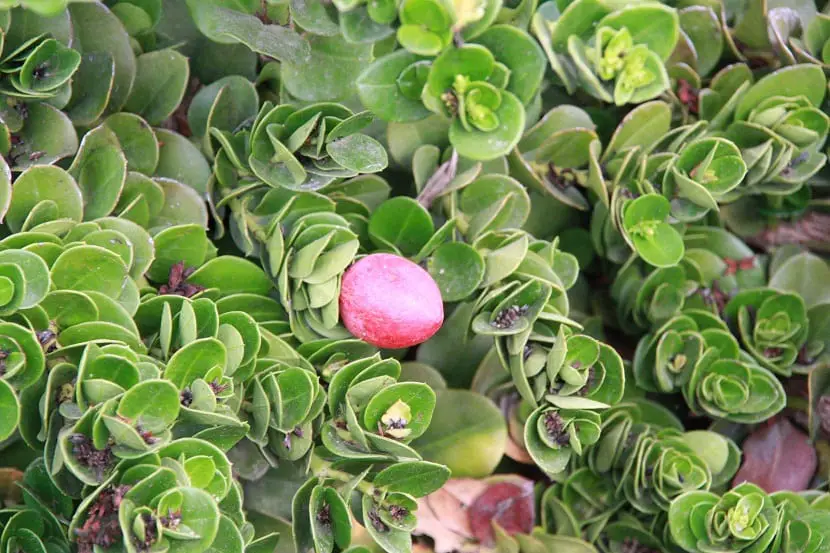
Within the Apocynaceae family is the genus Carisawhich has about seven species.
This consists of a bush-shaped plant from the tropical and subtropical areas of both Asia and Africa and Australia, which has beautiful oval leaves of a dark green tone. When spring arrives and during autumn, the Carisa begins to bloom and its white flowers (shaped like a star and five petals) secrete an exquisite fragrance very similar to jasmine and later bear fruits that when they reach maturity, these turn red and they are completely edible.

The fruit of Carisa, known as Natal PlumIt is used to make jams and some sweets because it has a mild flavor similar to that of strawberry and blueberry, so it is usually common to find it this way. This fruit is oval or round in shape and it measures about 6.25 x4 cm and it is possible to consume it naturally while it is fresh or as part of fruit salads.
Characteristics of the Carisa
It is a prickly white wood plant that perfectly withstands pruning; the same reaches 4,5-5,5 meters high and its spines have a length of at least 5cm.
The fruits of this plant are red and edible and are high in vitamin Cin addition to including a white latex. Its leaves are resistant and of a somewhat shiny dark green that has the upper part lighter than the lower one, they also have an oval shape and their tips are quite marked.
Its flowers can vary in size and can reach an approximate diameter of 35mm, they are white and have an odor like orange blossom or jasmine. It is also, quite an ornamental plantmaking it ideal for pots and gardens.
Carissa cultivation
The Carisa adjusts to all types of soil as long as it is well drained. Getting enough sun can grow perfectly anywherealthough it supports partial shade equally well; However, in the latter case it does not usually give flavored flowers and neither do its exquisite fruits.
Fertilizers must be used every 3 months when grown in soil and once a month when in containers; should be watered exactly at the end of each fertilizer application. Normally and in poor soils it tends to yellow, so it is advisable to use a foliar fertilizer that has trace elements, such as manganese, iron and zinc.
This plant multiplies not only through seedsbut also from cuttings; One of the main differences is that when sown by seeds, it can take about two months to germinate and could begin to bear fruit after two years; while in the case of cuttings, the whole process usually starts earlier.
Although it is very resistant to diseases / pests, it is possible for it to suffer from chlorosis in very poor soils.
Irrigation of the Carisa

Being a wooded plant, requires infrequent watering compared to herbaceous or annual plants.
The Carisa should be watered, not frequently, slowly and deeply using a sprayer or hose, in order to prevent shallow roots from developing or diseases in them. Being in pots, Carisa requires medium watering during its growing season except winter.
Pruning of the Carisa
After it has started to grow, the Carisa has to be pruned in order to keep its size under control and give the shrub shape, because this plant may grow to a large size and grow up messy. The most advisable thing is usually that the pruning begins at the end of winter or when spring arrives, according to the time in which it blooms.
